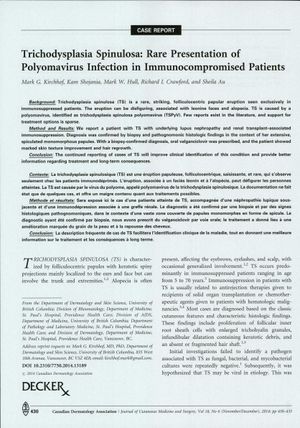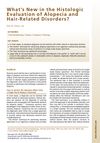Trichodysplasia Spinulosa: Rare Presentation of Polyomavirus Infection in Immunocompromised Patients
November 2014
in “
Journal of Cutaneous Medicine and Surgery
”

TLDR Antiviral medication valganciclovir may improve skin and hair in Trichodysplasia Spinulosa patients.
The document describes a case of Trichodysplasia Spinulosa (TS), a rare skin condition linked to immunosuppression, in a patient with lupus nephropathy who had undergone a renal transplant. The patient experienced significant improvement in skin texture and hair regrowth after treatment with oral valganciclovir, an antiviral medication. The case supports the potential effectiveness of valganciclovir for TS, although its exact mechanism against polyomavirus is not fully understood. The study also discusses the possible role of genetic factors, infectious vectors, and immunosuppressive drugs in the development of TS. The authors call for more case reporting to enhance the understanding and treatment of TS.




